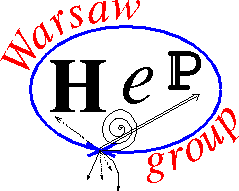SEMINARIUM FIZYKI WIELKICH ENERGII
Dnia 19 listopada (piątek) o godzinie 10:15, w sali B2.38 odbędzie się
seminarium, na którym zostanie wygłoszony referat pt.:
„Searches for exotic physics by comparing the fundamental properties of antiprotons and protons using Penning Traps at BASE experiment”
Referuje: Barbara Maria Latacz, RIKEN, on behalf of the BASE collaboration
Abstract:
The Standard Model is the most successful theory in physics, however, it does leave several questions open. For example the striking matter-antimatter imbalance in the visible Universe has yet to be understood, and the microscopic properties of dark matter have yet to be discovered. Related questions can be studied by ultra-high precision comparisons of the fundamental properties of protons and antiprotons, like the charge-to-mass ratios or the magnetic moments, which are subject of the experiments of the BASE collaboration at CERN. The core tool of BASE is the spectroscopy of single trapped antiprotons and protons using superconducting detectors in advanced cryogenic Penning trap systems. One
of the state-of-the-art results of the BASE collaboration is the measurement of the antiproton magnetic moment with a fractional precision of 1.5 parts in a billion [C. Smorra et al., Nature 550, 371 (2017)], which improved previous measurements by more than three orders of magnitude. Very recently, BASE extended its experimental program and has
set stringent limits on axion to photon conversion in the neV mass range, using superconducting LC circuits are haloscope detectors
(J. A. Devlin et al., Physical Review Letters 126.4 (2021): 041301).
In my talk, I will summarise the recent achievements of BASE, I will report on the progress in improving the frequency resolution of the experiment, and will outline strategies to further improve our high-precision studies of matter-antimatter symmetry to anticipated precision at the parts per trillion level. I will also summarize progress towards the development of the new broad-band axion haloscope BASE CDM.
Serdecznie zapraszamy
dr hab. Katarzyna Grzelak
prof. dr hab. Jan Królikowski
prof. dr hab. Aleksander Filip Żarnecki
High Energy Physics Seminar (19 November 2021) · Indico (cern.ch)

